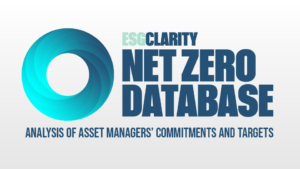The investment industry is still getting to grips with an accurate definition of impact investing, said Artemis’s Sacha El Khoury in this Green Dream video interview.
For her team, she explained, there is a dual mandate of delivering positive environmental and social outcomes alongside positive financial returns.
She also discussed the approach for the Artemis Positive Future Fund, which overlaps with the global equity team, impact washing and how being an expectant mother has made her more conscious of the waste in the fashion industry.
Watch the full video interview above and read the transcript below.
NK: Hello and welcome to this Green Dream video interview. I’m Natalie Kenway, and today I’m joined by Sacha El Khoury, head of impact equities at Artemis. So first of all, let’s set the scene. How do you define impacting investing and what do you assess?
SE: Impact investing has historically been the preserve of private markets.
And so really in the public market space and unlisted equities in particular, the concept is still very nascent. And so there isn’t really a definition or approach that everybody agrees on. The definition that everybody can agree on, however, is that intention to make an investment that delivers positive environmental and social outcomes alongside positive financial returns.
At Artemis, we adopt that definition. In other words, we have an ambitious dual mandate to deliver positive non-financial outcomes as well as an attractive financial returns.
NK: With your work at Artemis, do you find there’s a lot of crossover with global equities? Can you explain that?
SE: There is a natural overlap. When we look at the two teams and the way we look for ideas and the natural overlap occurs really when we’re looking at long-term secular growth trends.
The reality is a lot of these long-term growth trends are borne out of sustainability challenges. So when we think about what is the biggest sustainability challenge today? Probably climate change. When you look at the world and what’s happening, stakeholders are mobilising corporates, individuals, but governments and regulators as well. One of the latest examples is the US government coming up with a landmark legislation the Inflation Reduction Act, which promises to pump billions of dollars into the US economy.
And so that provides visibility for at least a decade and provides that tailwind that will benefit certain stocks. And so in looking for opportunities on the market, that is where the two teams naturally overlap.
NK: How would you say these themes and the impact investments on the portfolio hold up in these more difficult market conditions we’re seeing?
SE: I guess, in general, when you think about impact investing, it really depends on whether you’re focusing more on the engagement piece or whether you’re focusing more on the patient capital piece.
Some funds will do one almost exclusively and some will have a mix. Within our fund, there is a mix and because of our approach, we will always almost naturally be biased towards growth. In challenging market dynamics, probably the one that we’re seeing here today, growth comes in and out of favour. And naturally the portfolio will underperform when growth underperforms.
However, it’s really important to take a step back and look at the longer-term picture because, back to what I was saying about those long-term secular tailwinds, we are investing in those companies that not only will benefit but will drive some of these tailwinds and some of these growth trends. Over the long term, we are very much of the belief that these types of companies will drive outperformance, even though in the shorter term there might be some rotation in the market, which means underperformance.
NK: Something that’s talked about quite a bit on ESG Clarity, how do you avoid impact washing?
SE: Impact washing is a very interesting evolution to the whole greenwashing piece, but it’s also very important and I mentioned measurability, that measurability piece again, a key tenet of impact investing. The reason why that is, is because it builds accountability through the system. You hold your investee companies accountable, you hold yourself accountable to the client and you build transparency effectively through the system. And that transparency can help you as a client detect whether the impact is genuine or it isn’t. Within impact investing as well, a really important concept is theory of change. As an impact investor you should have a theory of change and you should be able to articulate it quite well, either at the portfolio level or at the stock level.
And that theory of change, essentially as the name suggests, is about identifying the problem, identifying what can be done about the problem and identifying what is being done by the investor in order to precipitate that change and then recording or evidencing that change. It is through again, that transparent rationale and theory of change that you can avoid impact washing.
NK: Something we always end Green Dream on, can you share an activity or something that you do to contribute to a low-carbon world?
SE: Well, a few years ago I made a conscious decision to stop buying as many clothes. In a very fast-paced, fast-fashion world, it is very tempting to buy cheap clothes and always be on trend. However, what I learned through my job, actually, and what very few people know, is the fashion industry is one of the most polluting industries in the world.
The other thing with being an expectant mother is that babies go through seven sizes apparently in their first two years of life, so that creates a lot of waste. In building her wardrobe, I’ve got a lot of hand-me-downs that I expect to hand down again.








